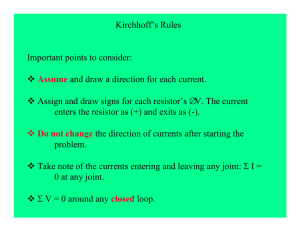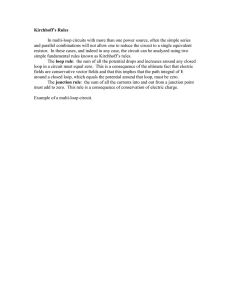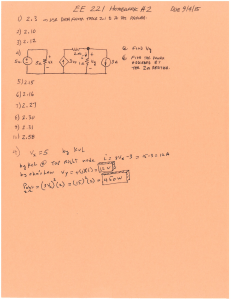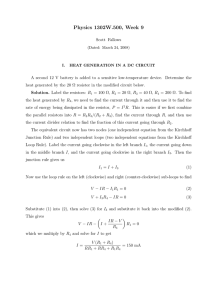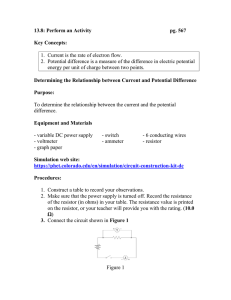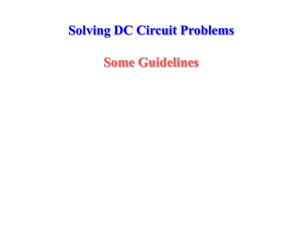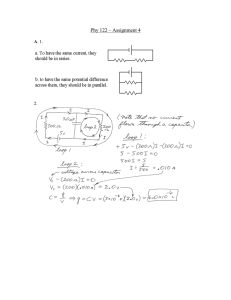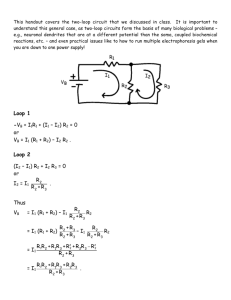Episode 117-4: Kirchhoff's Laws 2 (Word, 41 KB)
advertisement
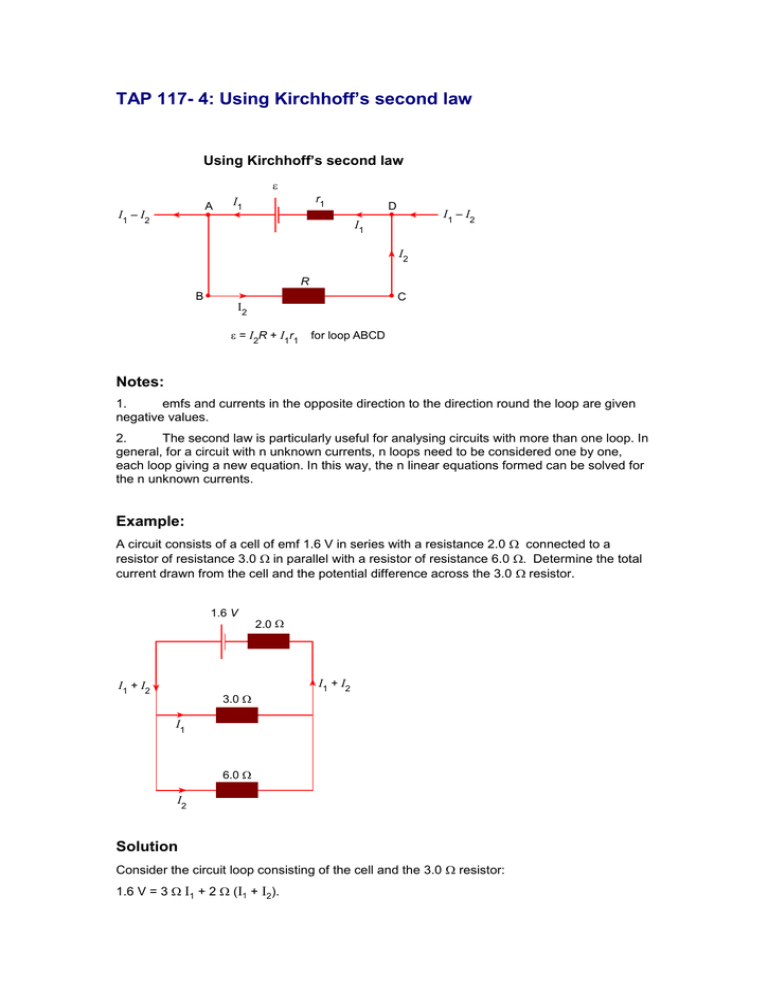
TAP 117- 4: Using Kirchhoff’s second law Using Kirchhoff’s second law A I1 – I2 r1 I1 D I1 – I2 I1 I2 R B C I2 = I2R + I1r1 for loop ABCD Notes: 1. emfs and currents in the opposite direction to the direction round the loop are given negative values. 2. The second law is particularly useful for analysing circuits with more than one loop. In general, for a circuit with n unknown currents, n loops need to be considered one by one, each loop giving a new equation. In this way, the n linear equations formed can be solved for the n unknown currents. Example: A circuit consists of a cell of emf 1.6 V in series with a resistance 2.0 connected to a resistor of resistance 3.0 in parallel with a resistor of resistance 6.0 Determine the total current drawn from the cell and the potential difference across the 3.0 resistor. 1.6 V I1 + I2 2.0 3.0 I1 + I2 I1 6.0 I2 Solution Consider the circuit loop consisting of the cell and the 3.0 resistor: 1.6 V = 3 I1 + 2 (I1 + I2). Thus: 1.6 V = 5 I1 + 2 I2. Consider the circuit loop consisting of the cell and the 6.0 resistor: 1.6 V = 6 I2 + 2 (I1 + I2). Thus 1.6 V = 2 I1 + 8 I2. Subtracting the second equation from the first gives: 0 V = 3 I1 + 6 I2 hence I1 = 2 I2. Substituting I1 = 2 I2 into the second equation gives: 1.6 V = 12 I2. Thus I2 = 0.13 A and I1 = 0.27 A. Current through cell = I1 + I2 = 0.40 A. pd across 3.0 resistor= I1 × 3.0 (= I2 6.0 ) = 0.8 V. External references This activity is adapted from Advancing Physics CD A-Z Kirchhoff’s Laws (2)
